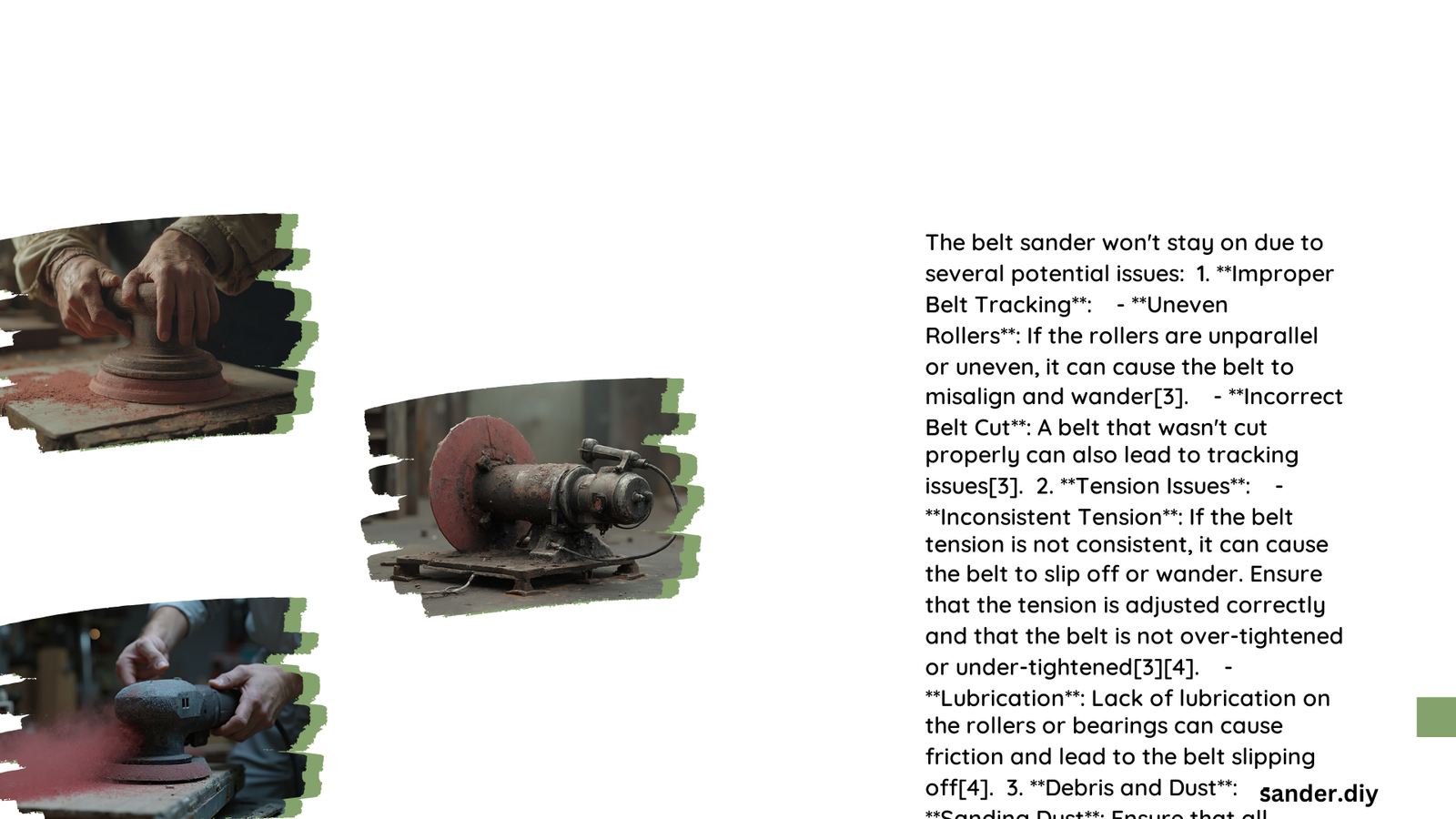When a belt sander unexpectedly stops mid-operation, it can disrupt workflow and cause frustration for woodworkers and DIY enthusiasts. Multiple factors can cause this issue, ranging from electrical problems to mechanical failures. Understanding the root causes and implementing systematic diagnostic approaches can help users quickly resolve the problem and restore their belt sander’s reliable performance.
What Causes a Belt Sander to Shut Down Unexpectedly?
Are Electrical Problems the Primary Culprit?
Electrical issues frequently contribute to belt sander operational problems. Key electrical factors include:
| Electrical Component | Potential Problem | Diagnostic Approach |
|---|---|---|
| Voltage Supply | Insufficient/Unstable Voltage | Check voltage range (108-132V) |
| Circuit Breaker | Incorrect Amperage Rating | Verify current draw compatibility |
| Power Switch | Mechanical Wear | Test switch continuity |
Voltage Requirements Explained
- Incoming voltage must remain within 10% of the machine’s rated voltage
- Deviations can trigger automatic shutdown mechanisms
- Use a multimeter to measure precise voltage levels
Can Mechanical Failures Interrupt Sander Operation?
Mechanical components play a crucial role in maintaining consistent belt sander performance:
- Motor Brush Condition
- Worn brushes create intermittent electrical contact
- Inspect brush length and surface wear
-
Replace if significant degradation is observed
-
Drive Belt Alignment
- Misaligned belts can trigger safety mechanisms
- Check for proper tension and positioning
- Ensure no obstructions interfere with belt movement
How to Diagnose Belt Sander Shutdown Problems?
Step-by-Step Diagnostic Procedure
- Initial Power Assessment
- Verify power cord integrity
- Check outlet functionality
-
Test with alternative power source
-
Switch Functionality Test
- Examine switch for physical damage
- Use continuity tester
-
Replace if inconsistent electrical pathway detected
-
Motor Brush Evaluation
- Remove brush caps
- Measure remaining brush length
- Check for smooth, even contact with commutator
What Tools Do You Need for Troubleshooting?
Essential diagnostic equipment includes:
– Multimeter
– Continuity tester
– Screwdriver set
– Replacement brushes
– Electrical contact cleaner
Cost Considerations for Repair
| Repair Component | Estimated Cost | DIY Difficulty |
|---|---|---|
| Power Switch | $10 – $50 | Low |
| Motor Brushes | $15 – $40 | Medium |
| Professional Repair | $100 – $250 | N/A |
Pro Tips for Preventing Future Failures
- Perform regular maintenance
- Store in dry, clean environment
- Use appropriate extension cords
- Clean electrical contacts periodically
- Avoid overloading the tool
Conclusion

Systematic diagnosis and understanding of potential failure points can help users effectively resolve belt sander operational issues. By methodically checking electrical and mechanical components, most problems can be identified and corrected with minimal expense and effort.
